Are you considering investing in new cooking utensils? Feeling confused between teak vs bamboo cooking utensils? Look no further!
In this article, we will compare teak and bamboo cooking utensils in terms of durability, sustainability, heat resistance, maintenance, and aesthetics.
By exploring the pros and cons of each material, you’ll gain a deeper understanding of which option best suits your needs.
So, let’s dive in and discover the differences between teak and bamboo cooking utensils!
Key Takeaways
- Teak outperforms bamboo in terms of durability and longevity.
- Teak utensils are more sustainable and eco-friendly compared to bamboo utensils.
- Teak has higher heat resistance and offers superior performance in terms of heat distribution and retention.
- Both teak and bamboo utensils require regular maintenance and care, including cleaning and oiling.
Teak Vs Bamboo Cooking Utensils: Durability and Longevity
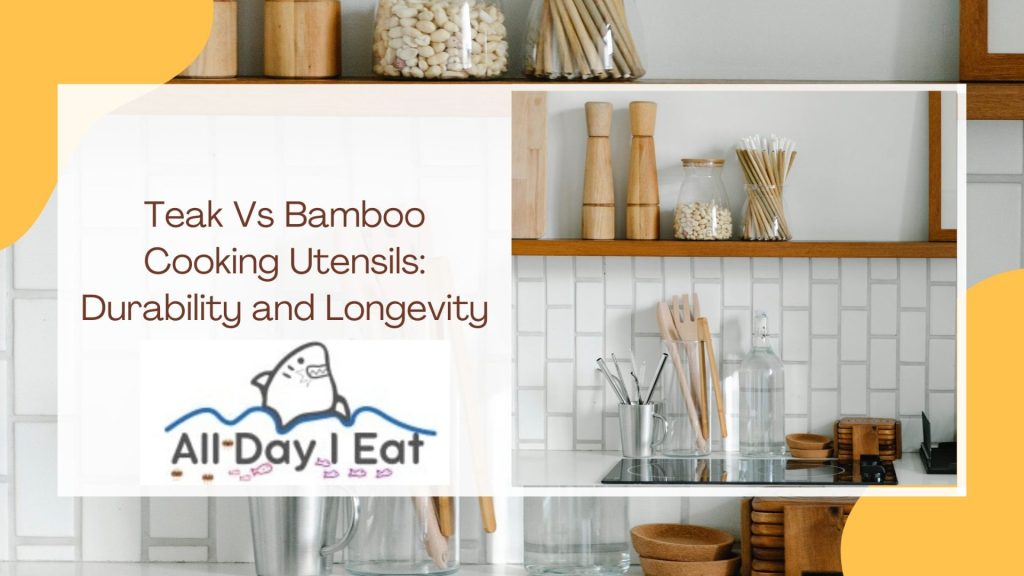
When it comes to durability and longevity of teak vs bamboo cooking utensils, teak outperforms bamboo in the realm of cooking utensils.
Teak is known for its exceptional strength and resistance to wear and tear. Its dense grain structure makes it highly resistant to moisture, preventing warping or cracking over time.
Teak wood, extracted from the Tectona grandis tree indigenous to regions of South and Southeast Asia, is a dense and fine-grained variety of hardwood.
Bamboo wood, often referred to as “bamboo,” is not technically wood but rather a type of grass that has characteristics similar to wood.
Bamboo, while also durable, is more susceptible to damage from repeated use and exposure to heat and moisture.
Teak utensils can withstand high temperatures without compromising their integrity, making them ideal for cooking and serving hot dishes.
Additionally, teak has natural oils that provide protection against stains and odors, making it easier to clean and maintain.
With proper care, teak utensils can last for decades, ensuring a long-lasting and reliable addition to your kitchen arsenal.
Sustainability and Eco-Friendliness
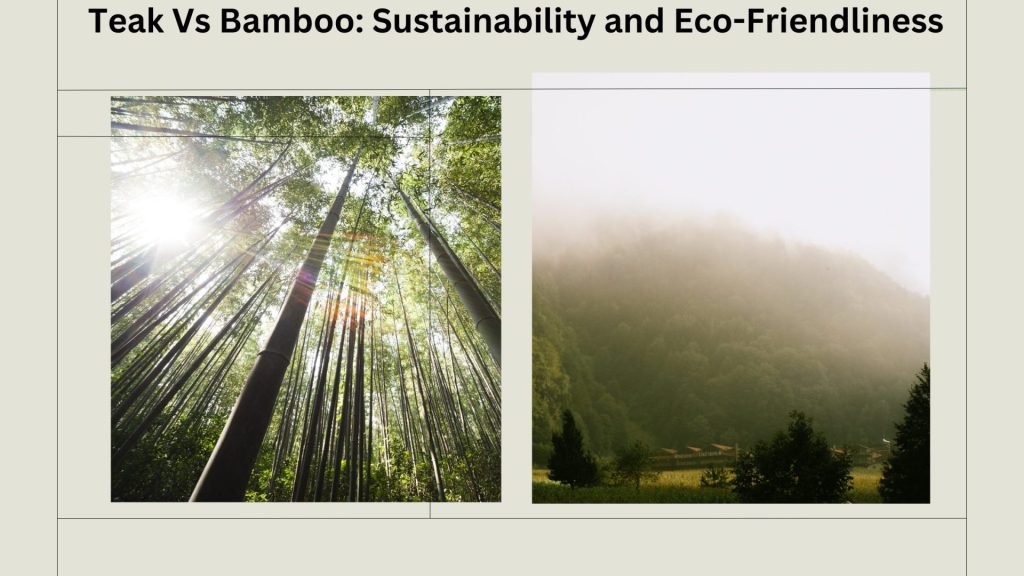
Teak vs Bamboo cooking utensils, which one is more sustainable and eco-friendly?
Teak utensils continue to excel over bamboo in terms of sustainability and eco-friendliness.
While both teak and bamboo are renewable resources, teak has a clear advantage in terms of durability and resistance to weathering.
Teak trees grow slowly, taking several decades to reach maturity, but they can live for up to 100 years.
This means that teak forests can be sustainably managed, ensuring a constant supply of teak wood without depleting natural resources.
Bamboo, on the other hand, grows rapidly and can be harvested in just a few years.
However, bamboo forests require extensive irrigation and fertilization, which can have negative environmental impacts.
Additionally, bamboo utensils may contain adhesives or finishes that aren’t eco-friendly.
Heat Resistance and Performance

As you consider the heat resistance and performance of teak vs bamboo cooking utensils?
It’s important to note that bamboo utensils generally have a lower resistance to high temperatures compared to teak utensils.
This is due to the inherent properties of the materials themselves.
Here are four key factors to consider when evaluating the heat resistance and performance of teak vs bamboo cooking utensils:
- Heat resistance: Teak wood has a higher heat resistance than bamboo, making it more suitable for high-temperature cooking applications.
- Durability: Teak utensils are known for their exceptional durability, as they can withstand prolonged exposure to heat without warping or cracking.
- Performance: Teak utensils offer superior performance in terms of heat distribution and retention, ensuring even cooking and preventing hot spots.
- Longevity: Bamboo utensils may deteriorate faster when exposed to high temperatures, leading to a shorter lifespan compared to teak utensils.
Considering these factors, teak cooking utensils are a reliable choice for those seeking heat resistance and optimal performance in the kitchen.
Maintenance and Care
To properly maintain and care for your teak or bamboo cooking utensils, it is essential to follow these guidelines.
Both teak and bamboo utensils require regular cleaning and oiling to keep them in optimal condition.
However, there are slight differences in the care routine for each material.
For teak utensils, it is recommended to wash them by hand using warm soapy water and a soft sponge.
Avoid soaking them for long periods or using abrasive cleaners, as this can damage the wood.
After washing, pat them dry with a towel and allow them to air dry completely before storing.
To maintain the luster of teak, apply food-grade mineral oil every few months.
On the other hand, bamboo utensils should also be washed by hand with warm soapy water, but they can handle a short soak if needed.
To prevent bamboo from drying out, it is important to regularly apply a food-grade oil, such as coconut or mineral oil.
This will help preserve the natural moisture and prevent cracking.
To summarize the maintenance and care for teak and bamboo cooking utensils, refer to the table below:
| Maintenance | Teak Utensils | Bamboo Utensils |
|---|---|---|
| Cleaning | Hand wash with warm soapy water and a soft sponge | Hand wash with warm soapy water and a soft sponge |
| Soaking | Avoid prolonged soaking | Short soak if needed |
| Abrasive cleaners | Avoid | Avoid |
| Drying | Air dry completely before storing | Air dry completely before storing |
| Oiling | Apply food-grade mineral oil every few months | Apply food-grade oil regularly to prevent drying out |
Aesthetics and Design

When choosing between teak and bamboo cooking utensils, consider the different aesthetics and designs they offer. Here are four key aspects to consider:
- Appearance:
- Teak utensils have a rich, warm color with a smooth and polished surface, giving them an elegant and sophisticated look.
- Bamboo utensils, on the other hand, have a natural and earthy appearance with visible grain patterns, offering a rustic and organic feel to your kitchen.
2. Texture:
- Teak utensils have a dense and sturdy texture, providing a comfortable grip and a sense of durability.
- Bamboo utensils have a lightweight and slightly fibrous texture, offering a tactile experience that’s gentle on your hands.
3. Shape and Style:
- Teak utensils often feature sleek and streamlined designs, perfect for modern and minimalist kitchens.
- Bamboo utensils come in various shapes, from traditional to contemporary, allowing you to choose a style that matches your kitchen decor.
4. Customization:
- Teak utensils can be engraved or personalized with intricate designs, making them a great gift option.
- Bamboo utensils can also be customized, with the added advantage of being easily etched or engraved due to their natural properties.
Consider these factors when deciding between teak and bamboo cooking utensils, as they can greatly enhance the aesthetics and overall design of your kitchen.


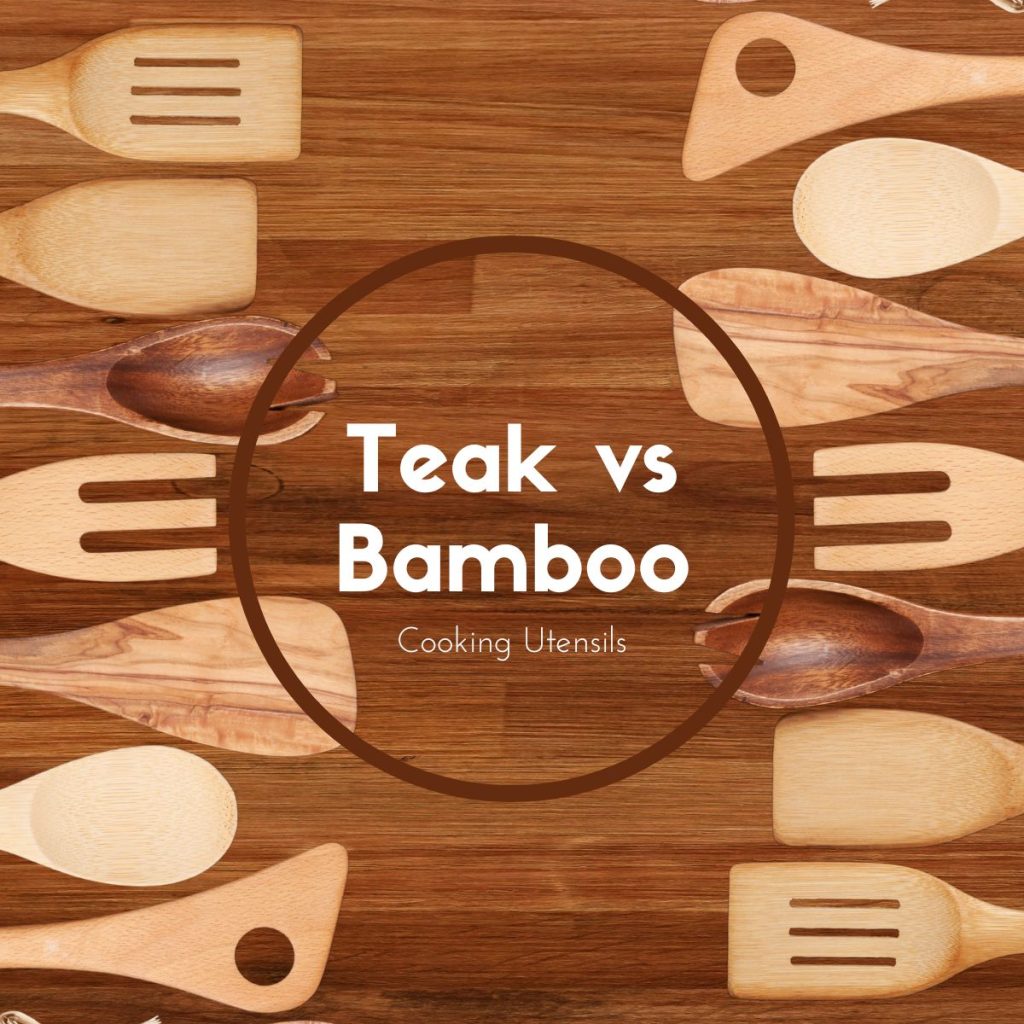





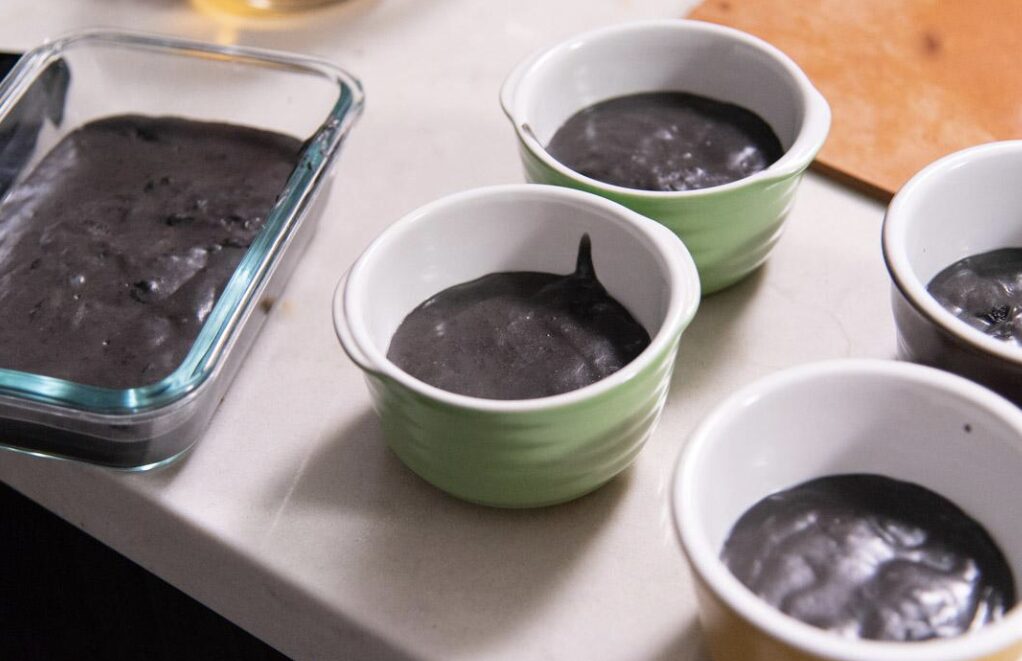
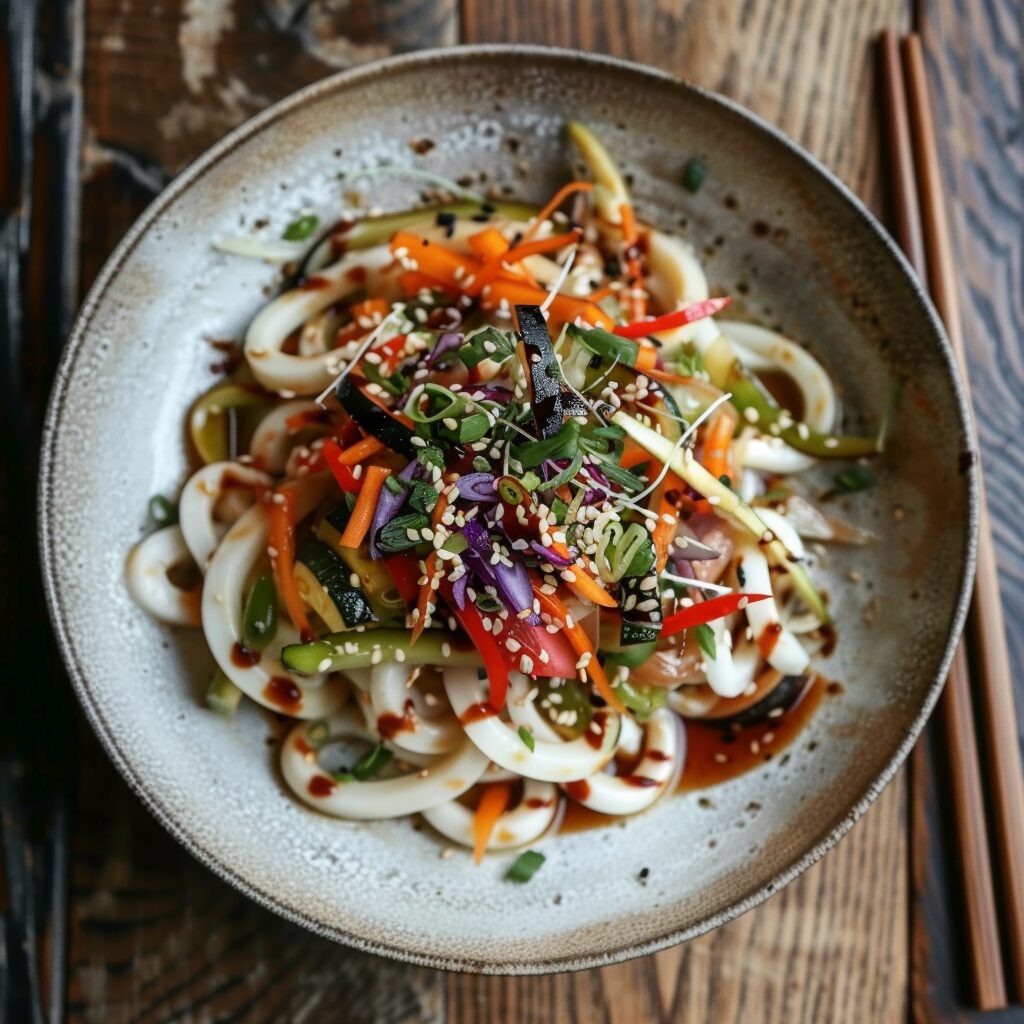

Konnichiwa! (Hello!) I'm Pat Tokuyama, a Japanese tofu cookbook author, who travels for music, food, and adventure. If you like Japanese tea, checkout some of the newestorganic japanese tea, matcha bowls and noren and more!
** Curious about the Plant Based Japanese Cooking Club? ** Learn more here!